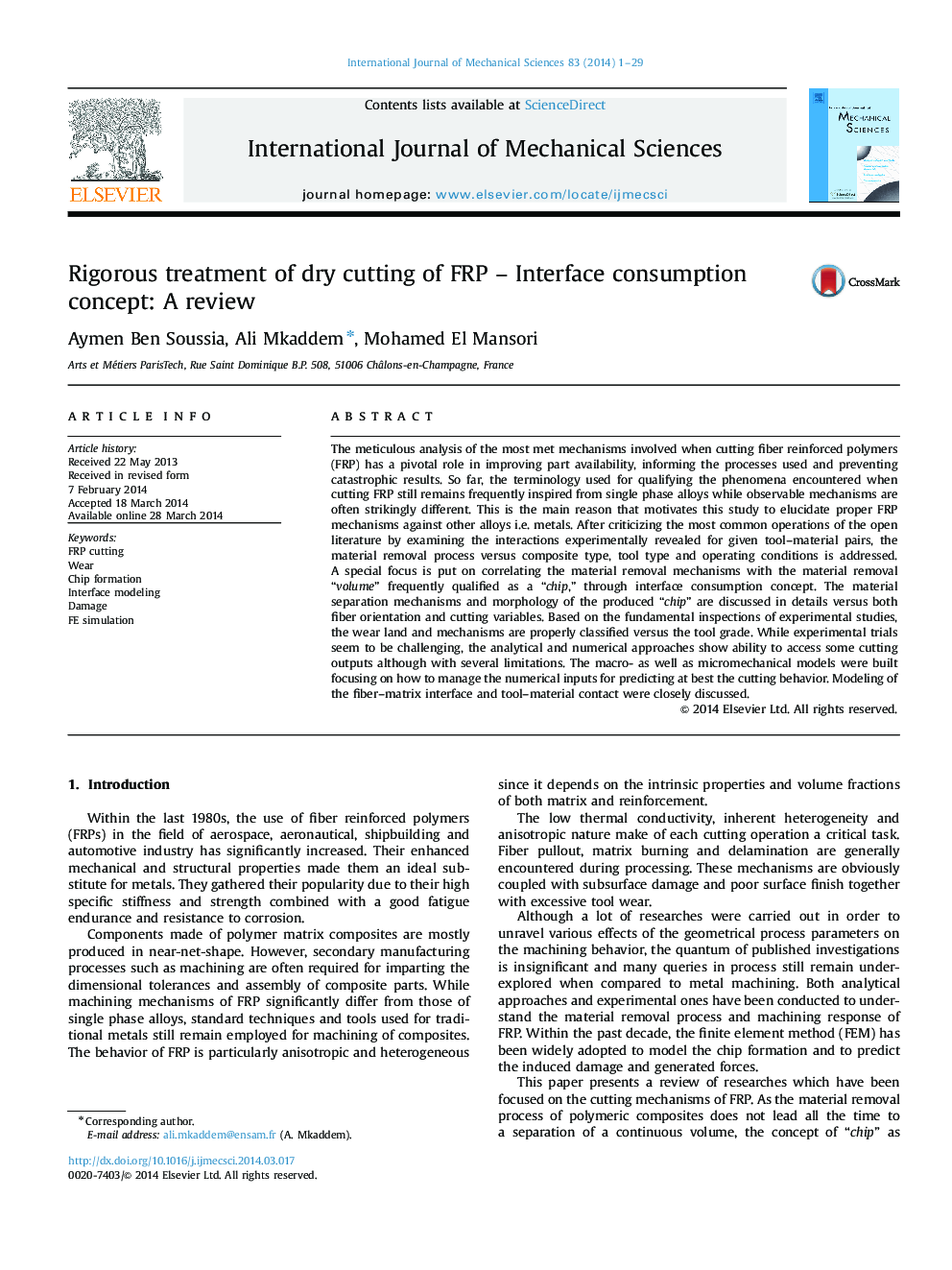| Article ID | Journal | Published Year | Pages | File Type |
|---|---|---|---|---|
| 783530 | International Journal of Mechanical Sciences | 2014 | 29 Pages |
•A comprehensive review on machining of FRP composites is conducted.•The mechanisms addressed in experimental studies of FRP were properly classified.•The confusion with metal cutting terminology, committed for discussing cutting behavior of FRP is clearly outlined.•The emerging multiscale methods for modeling cutting behavior of FRP composite are presented.
The meticulous analysis of the most met mechanisms involved when cutting fiber reinforced polymers (FRP) has a pivotal role in improving part availability, informing the processes used and preventing catastrophic results. So far, the terminology used for qualifying the phenomena encountered when cutting FRP still remains frequently inspired from single phase alloys while observable mechanisms are often strikingly different. This is the main reason that motivates this study to elucidate proper FRP mechanisms against other alloys i.e. metals. After criticizing the most common operations of the open literature by examining the interactions experimentally revealed for given tool–material pairs, the material removal process versus composite type, tool type and operating conditions is addressed. A special focus is put on correlating the material removal mechanisms with the material removal “volume” frequently qualified as a “chip,” through interface consumption concept. The material separation mechanisms and morphology of the produced “chip” are discussed in details versus both fiber orientation and cutting variables. Based on the fundamental inspections of experimental studies, the wear land and mechanisms are properly classified versus the tool grade. While experimental trials seem to be challenging, the analytical and numerical approaches show ability to access some cutting outputs although with several limitations. The macro- as well as micromechanical models were built focusing on how to manage the numerical inputs for predicting at best the cutting behavior. Modeling of the fiber–matrix interface and tool–material contact were closely discussed.
